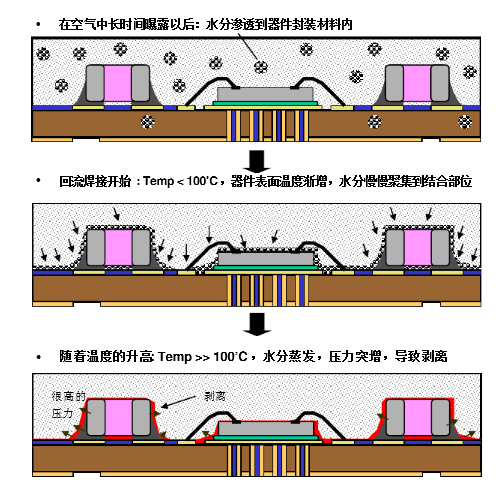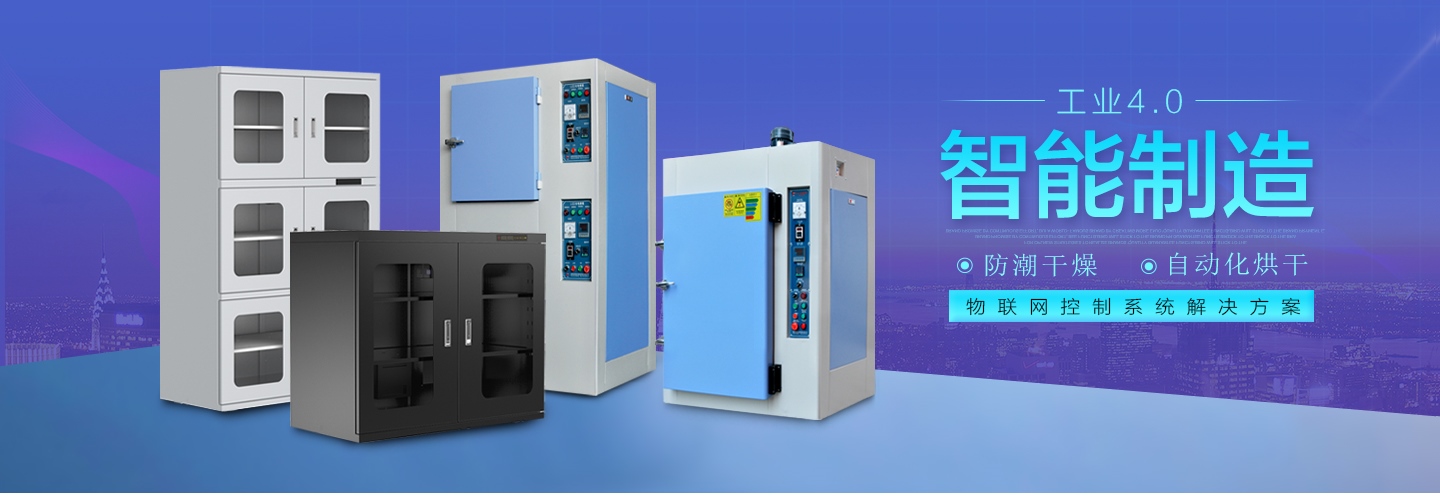MSD (humidity sensitive devices) are basically integrated devices with high integration and complex internal structure. This also caused many gaps in the (humidity sensitive device). Although these gaps are very small, they still exist. Where there are gaps, moisture will slowly penetrate in. When moisture has penetrated into the humidity-sensitive device, after high-temperature baking or reflow soldering, there will be a pressure difference, which will cause delamination, oxidation, peeling, micro-cracks, popcorn and other defects, affecting the service life and damage the device.

After the MSD device absorbs moisture, its main damage process is in the heating and high temperature process. Such as reflow soldering, wave soldering, oven, etc. As we all know, the boiling point of water is 100 degrees. When the temperature is above 100 degrees, the vaporization of water will become very intense. When the water vapor in the component gap vaporizes, its volume will also change sharply. Correspondingly, the MSD device will expand and deform to a certain extent. And after the high temperature, the next thing is the temperature drop. Due to thermal expansion and contraction, the MSD device after expansion will have the stress of retracting to its original shape. However, the current MSD devices are generally rigid materials. This also causes the MSD device to expand and cracks during the cooling process. This leads to the phenomena of "microcracks", "peeling", "delamination", and "popcorn" that we often call.
Solution
Yihexing low-temperature and low-humidity drying cabinet combines ultra-low dehumidification technology and low-temperature baking to fully meet the environmental requirements of 40℃+5%RH. It can restore the landing life of MSD humidity-sensitive components without high-temperature baking, which is in line with J-STD -033 International Quality Control Code. This machine uses 40℃/60℃ low temperature to force the water molecules to evaporate from the inside of the parts. The dehumidifying host absorbs the water molecules in the air inside the cabinet and discharges them out of the cabinet. The dryness can reach below 5%RH. It not only completely avoids the potential thermal damage and easy oxidation of electronic parts when baking in a traditional 125 ℃ oven, but also solves the problem of moisture re-attaching to the parts after cooling, and realizes the function of restoring the life of the floor.
